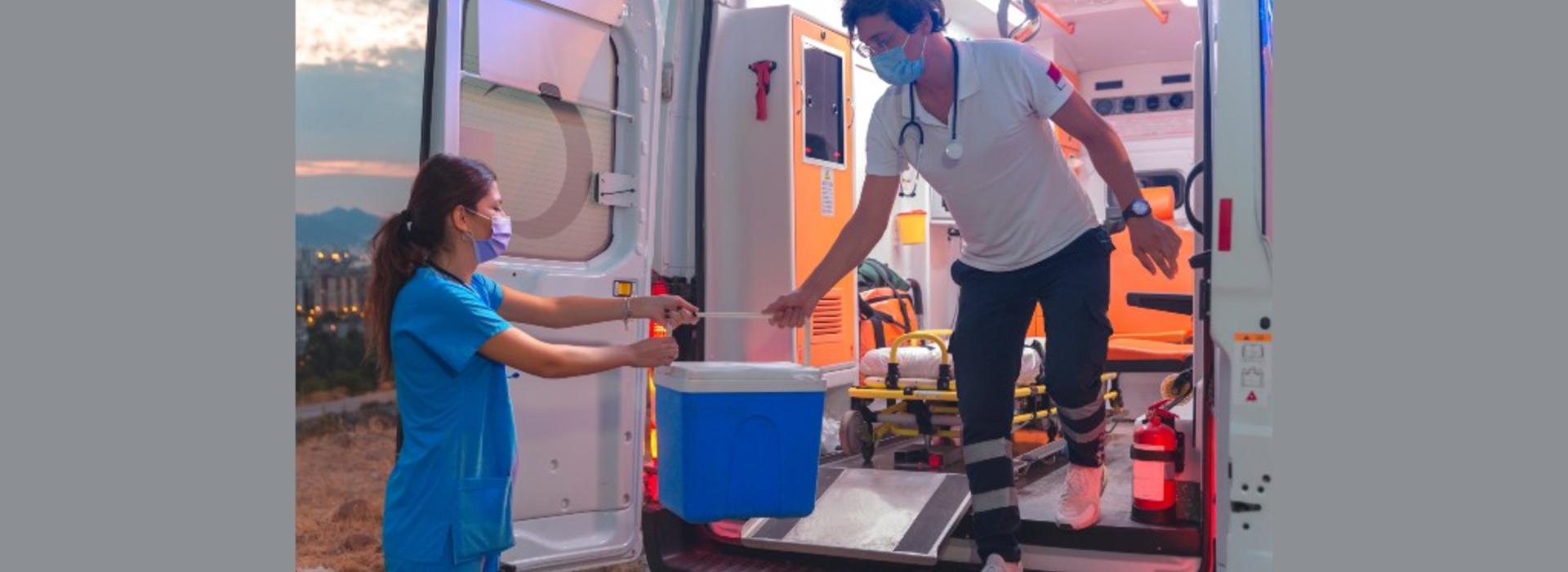
Talking organ donation with U of M
MINNEAPOLIS/ST. PAUL (04/03/2023) — More than 100,000 people in the United States are waiting for an organ donor right now, according to the Health Resources and Service Administration. Each donation is impactful — a single donor can save eight lives and enhance over 75 more.
For National Donate Life Month in April, Dr. Thomas Leventhal with the University of Minnesota Medical School talks about the importance of organ donation, misconceptions, and how people can make a difference.
Q: Why is organ and tissue donation so important?
Dr. Leventhal: Transplantation can provide a cure, so to say, for many medical conditions that are irreversible and typically end in mortality or severe sickness. In my practice, I’ve seen patients with liver failure who can essentially live normal lives after receiving a liver transplant.
Donors can also provide tissues that can help those with torn ligaments in their knee or for people with vision loss due to a disease involving the retina, ultimately and dramatically improving their quality of life.
Q: What is living-donor transplantation? What are the most common types?
Dr. Leventhal: For some people with end-stage organ failure, they may be a candidate to receive a donated organ (or partial organ) from another living person. The donor is often a family member or close friend of the potential recipient. Other times, the donor may be unknown to the recipient, but their organ is an excellent match. Living-donor transplants typically involve kidneys or a portion of the liver, and studies have shown these donors tend to have great long-term outcomes. Living-donor transplantation is an excellent way to receive a transplant without significant time on a wait list, which decreases the likelihood of the recipient getting seriously ill from their disease.
Q: What are some misconceptions about organ and tissue donation?
Dr. Leventhal: Many people have heard rumors that medical teams are aggressive about declaring someone dead, or that "death panels" exist to transition hospitalized patients into donors. This simply isn’t true. Every life is immensely valuable and we work hard to save and maintain each one. Sometimes the best medical care simply isn’t enough to prevent death, and in those situations, it provides an incredible opportunity for a donor to give part of themselves to others in desperate need.
Q: Who can become an organ and tissue donor?
Dr. Leventhal: Anyone can be an organ donor! Any time you apply for a state ID or driver's license in Minnesota there is an opportunity to document your desire to be formally recognized as a donor. Minnesota's also been a national leader in providing opportunities for people to declare themselves as organ and tissue donors by including it as an option on hunting and fishing license applications. Regardless of including this information on a formal license, it is important to talk to loved ones and those that would speak on your behalf to make sure they know your desire to donate. I am very proud that the people of Minnesota, North Dakota and South Dakota have some of the highest percentages of registered organ donors in the U.S.
Q: What research are you doing in this area at the University of Minnesota?
Dr. Leventhal: Our team at the University of Minnesota recently completed a study evaluating liver transplantation for people with acute liver failure — a severe malfunction of the liver which can be deadly. We were able to show that donated organs were of the highest quality and that people who received liver transplant with this condition recovered very well. We are also in the process of assessing a standardized approach to managing organ and tissue donors to see if it can help maximize the number of organs and tissues the incredibly generous individuals are able to share.
Dr. Thomas Leventhal is an assistant professor of medicine at the University of Minnesota Medical School and a transplant hepatologist, gastroenterologist and critical care physician with M Health Fairview. Dr. Leventhal treats critically ill patients with liver disease, with a special clinic interest in those with acute liver failure, and management of hospitalized patients before and after liver transplantation. His research focus is acute liver failure as well as outcomes in the pre- and post-transplant period and generic drug costs and their impact on care.
-30-
About “Talking...with U of M”
“Talking...with U of M” is a resource whereby University of Minnesota faculty answer questions on current and other topics of general interest. Feel free to republish this content. If you would like to schedule an interview with the faculty member or have topics you’d like the University of Minnesota to explore for future “Talking...with U of M,” please contact University Public Relations at unews@umn.edu.
About the University of Minnesota Medical School
The University of Minnesota Medical School is at the forefront of learning and discovery, transforming medical care and educating the next generation of physicians. Our graduates and faculty produce high-impact biomedical research and advance the practice of medicine. We acknowledge that the U of M Medical School, both the Twin Cities campus and Duluth campus, is located on traditional, ancestral and contemporary lands of the Dakota and the Ojibwe, and scores of other Indigenous people, and we affirm our commitment to tribal communities and their sovereignty as we seek to improve and strengthen our relations with tribal nations. For more information about the U of M Medical School, please visit med.umn.edu.